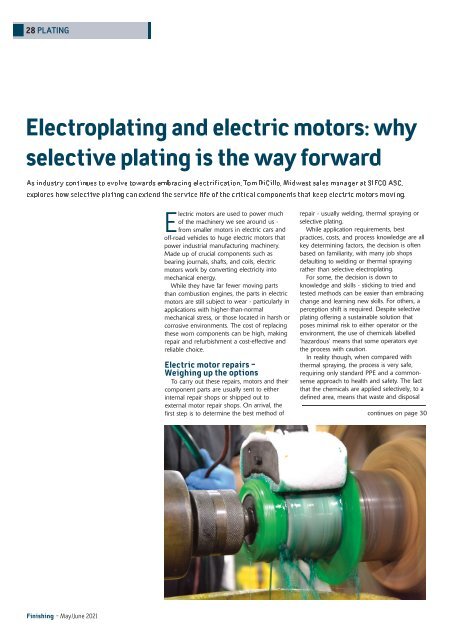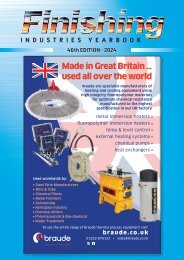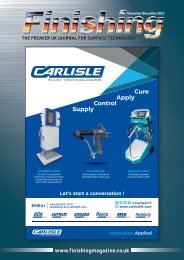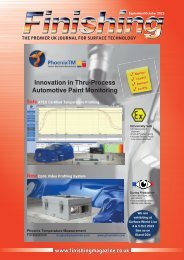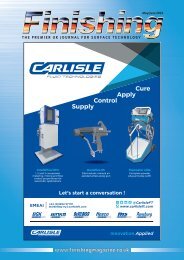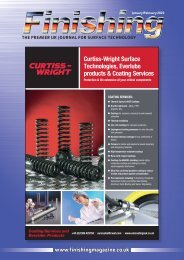Create successful ePaper yourself
Turn your PDF publications into a flip-book with our unique Google optimized e-Paper software.
28 PLATING<br />
Electroplating and electric motors: why<br />
selective plating is the way forward<br />
Electric motors are used to power much<br />
of the machinery we see around us -<br />
from smaller motors in electric cars and<br />
off-road vehicles to huge electric motors that<br />
power industrial manufacturing machinery.<br />
Made up of crucial components such as<br />
bearing journals, shafts, and coils, electric<br />
motors work by converting electricity into<br />
mechanical energy.<br />
While they have far fewer moving parts<br />
than combustion engines, the parts in electric<br />
motors are still subject to wear - particularly in<br />
applications with higher-than-normal<br />
mechanical stress, or those located in harsh or<br />
corrosive environments. The cost of replacing<br />
these worn components can be high, making<br />
repair and refurbishment a cost-effective and<br />
reliable choice.<br />
Electric motor repairs –<br />
Weighing up the options<br />
To carry out these repairs, motors and their<br />
component parts are usually sent to either<br />
internal repair shops or shipped out to<br />
external motor repair shops. On arrival, the<br />
first step is to determine the best method of<br />
repair - usually welding, thermal spraying or<br />
selective plating.<br />
While application requirements, best<br />
practices, costs, and process knowledge are all<br />
key determining factors, the decision is often<br />
based on familiarity, with many job shops<br />
defaulting to welding or thermal spraying<br />
rather than selective electroplating.<br />
For some, the decision is down to<br />
knowledge and skills - sticking to tried and<br />
tested methods can be easier than embracing<br />
change and learning new skills. For others, a<br />
perception shift is required. Despite selective<br />
plating offering a sustainable solution that<br />
poses minimal risk to either operator or the<br />
environment, the use of chemicals labelled<br />
‘hazardous’ means that some operators eye<br />
the process with caution.<br />
In reality though, when compared with<br />
thermal spraying, the process is very safe,<br />
requiring only standard PPE and a commonsense<br />
approach to health and safety. The fact<br />
that the chemicals are applied selectively, to a<br />
defined area, means that waste and disposal<br />
continues on page 30<br />
<strong>Finishing</strong> - <strong>May</strong>/<strong>June</strong> <strong>2021</strong>


